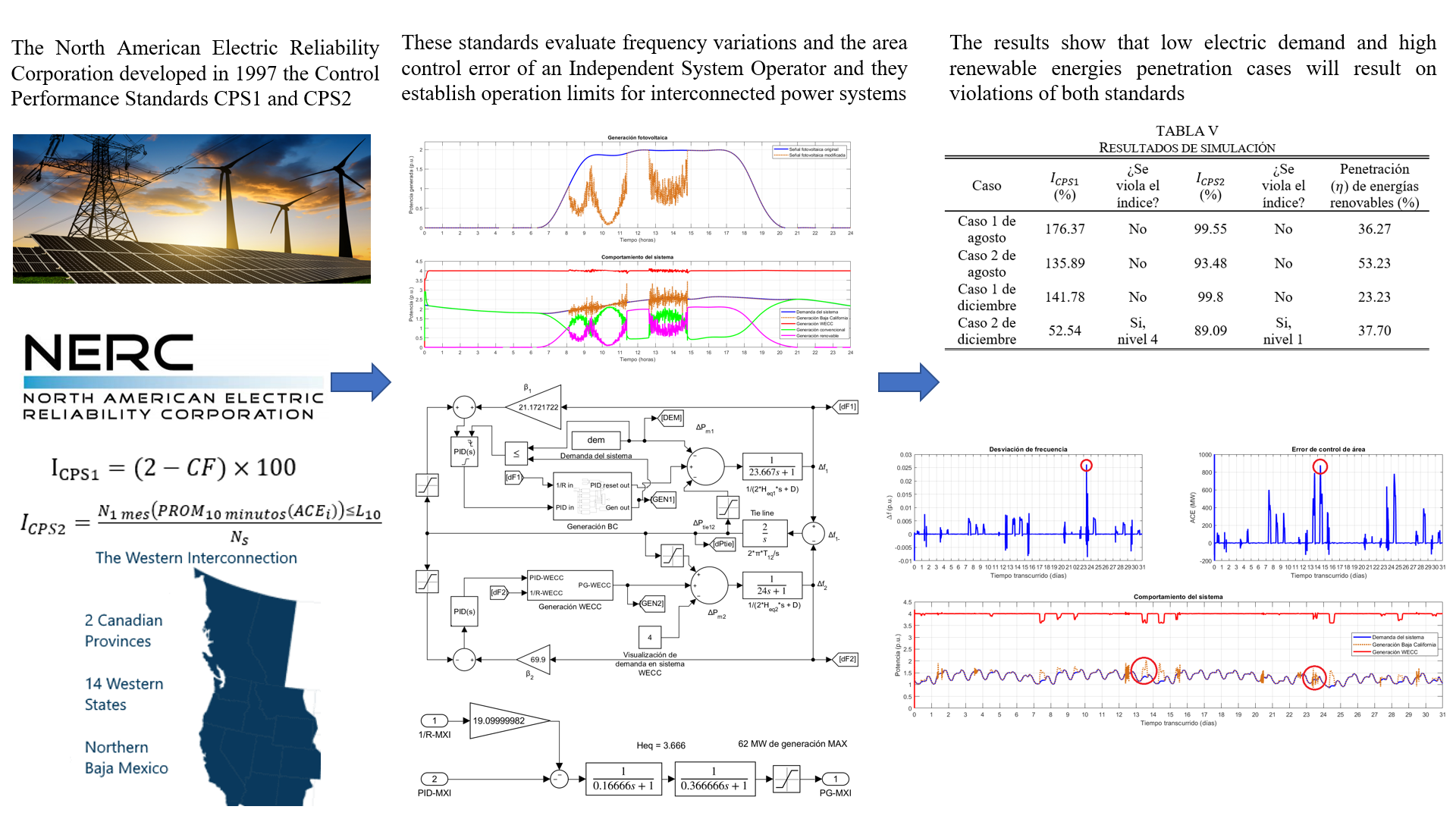Analysis of the CPS1 and CPS2 Indices Behavior in a Two-Area Power System Considering Renewable Energy Sources
Keywords:
ACE, Control Performance Standards, Electric Power Systems, Interconnection, RenewablesAbstract
Variable renewable energies integration has been a study subject for electric power systems operation. Different operation scenarios require to be analyzed especially in the topics of reliability and electric markets. Within the reliability topic, the North American Electric Reliability Corporation (NERC) developed in 1997 the Control Performance Standards CPS1 and CPS2 that evaluate the behavior of electric frequency and electric power interchange between control areas. These standards evaluate frequency variations and the area control error of an Independent System Operator (ISO) and they establish operation limits for interconnected power systems. In this paper, with the objective to evaluate the behavior of the indices of these standards, the Mexican Baja California system is used as a study case wherein utility scale renewable energies are integrated to the system while taking into account the interconnection to an equivalent of the Western Electricity Coordinating Council (WECC) power system where the system operation is evaluated for a month. The results show that low electric demand and high renewable energies penetration cases may result on violations of both standards, meaning that the reliability of the system would be compromised under those operation circumstances.
Downloads
References
Z. Bin-Zahid, “Estimation of Frequency Control Performance Index”. M. S. thesis. Dept. of Elect. and Comp. Eng., Univ. of Manitoba., Winnipeg, Canada, 2014.
M. Fekri-Moghadam, “Efficient hydroelectric generation using novel balance schemes”. Ph.D. thesis. Dept. of Elect. and Comp. Eng., University of British Columbia, Vancouver, Canada, 2015.
V. Alvarez, S. Mazuelas, and J. A. Lozano, “Probabilistic load forecasting based on adaptive online learning,” IEEE Transactions on Power Systems, vol. 36, no. 4, pp. 3668–3680, Jan. 2021.
A. Oneal, "A simple method for improving control area performance: area control error (ACE) diversity interchange ADI", IEEE Transactions on Power Systems, vol. 10, no. 2, pp. 1071-1076, 1995.
N. Cohn, “Considerations in the regulation of interconnected Areas”, IEEE Transactions Power Apparatus and Systems, vol. 86, pp. 1527-1538, 1967.
NERC, “Balancing and frequency control,” NERC Resources Subcommittee, 2011.
Real Power Balancing Control Performance, NERC standard BAL-001-2, 2013.
Real Power Balancing Control Performance, NERC standard BAL-001-1, 2013.
H. Yousef, “Load Frequency Control of Power Systems,” in Power System Load Frequency Control Classical and Adaptive Fuzzy Approaches, 1st ed. Boca Raton: CRC PRESS, 2017, pp. 7-31.
"Interconnection Epsilons." NERC. [Online]. Available: https://www.nerc.com/comm/OC/Pages/RS/Interconnection-Epsilons.aspx.
"Frequency Bias Settings." NERC. [Online]. Available: https://www.nerc.com/comm/OC/BAL0031_Supporting_Documents_2020_DL/BAL-003_Frequency_Bias_Settings_02Apr19.pdf.
"Pronósticos de Generación Intermitente", Cenace.gob.mx. [Online]. Available: https://www.cenace.gob.mx/SIM/VISTA/REPORTES/H_PronosticosGeP.aspx.
"Estimación de la Demanda Real del Sistema", Cenace.gob.mx. [Online]. Available: https://www.cenace.gob.mx/Paginas/SIM/Reportes/EstimacionDemandaReal.aspx.


